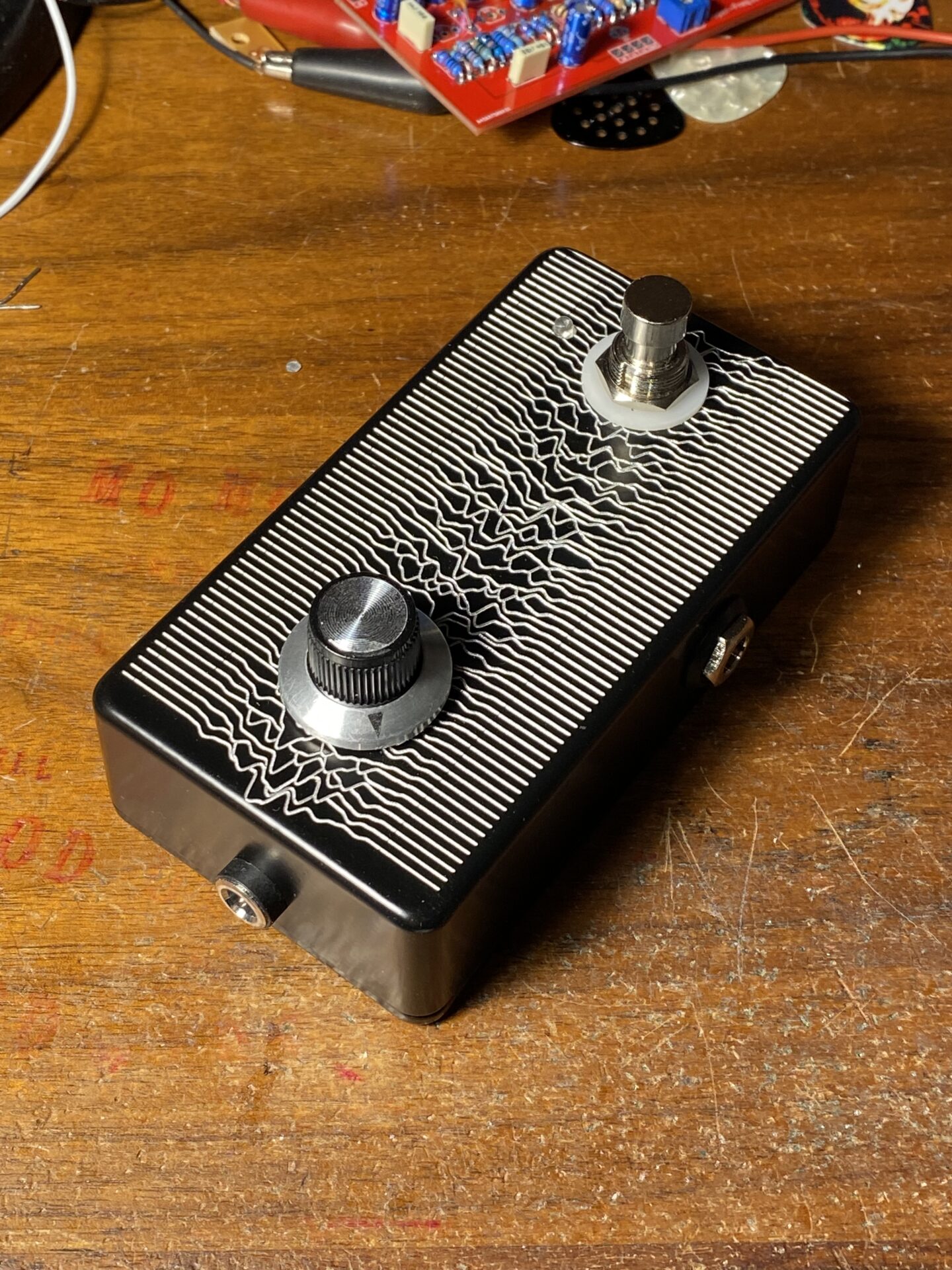Here is a kay Fuzztone clone. This is an octave-type fuzz that uses a full-wave rectifier. It is similar to the Super Fuzz and all its variants. The Kay Fuzz Tone uses fewer transistors than the Super Fuzz so you could think of it as a stripped-down and simpler version.
The kay Fuzz Tone came in a plastic enclosure with a treadle, like a wah pedal. There are some pictures of an original on this thread over at Freestomboxes.org: Kay Fuzz Tone.
Plenty of people make clones and modified versions of this circuit it definitely has a following. Here is a clone: Basic Audio Kay Fuzz. There is also the Third man Bumble Buzz. Here’s a Kay in a wah enclosure.
Here is a demo I found on the inter webs.
Here’s the Edge playing what I think is a Kay Fuzz Tone.
Here’s Daniel Lanois – Orange Kay. Sure sounds, and looks like he’s using the Kay.
My Build
I’m not sure if the schematic I used is 100% correct. I get similar tones but the tone control doesn’t seem to work the same. I have found several schematics that have a few minor differences. I feel this is in the ballpark but could use adjustment.
The differences are mainly around R16 and R17 in my schematic. One schematic has R16 at 100k and another omits this.

One modification I made was to add four clipping diodes. This mod was borrowed from the Bumble Buzz. I figured I could populate just two of the diodes like the original, or add four like the bumble.
I ordered boards from PCBWay.com. Their 10 boards for $5 is a great deal.


I built up the first board with four 1N400X diode like the Bumble Buzz.




I used a 3PDT PCB and a ribbon cable to connect the board to the switch. This made for a quick and painless build.
I had an enclosure I milled earlier with a pattern similar to Joy Divisions: Unknown Pleasures album art. Did Joy division use the kay Fuzz Tone? I have no idea. Does this sound like “Joy Division”? I doubt it. does it matter? Not in the least. The image is super great!



I stuffed everything in the box and it all worked on the first attempt. One issue was the volume. The pedal was really loud and doesn’t have volume control. Not sure if this is a mistake in my build or a by-product of using 4 silicon diodes over the 2 germanium diodes in the original. This was sure to raise the volume!
As an experiment, I put a 100K trim pot in for R17. This provided an internal adjustment to set the volume. This worked but the original pot wasn’t sounding quite right. I found another schematic by Gottfried Divos that was the same but had an extra cap across the pot and used a jumper in place of R16. I added the cap across the pots lugs 1 and 3 and used an 8 ohm resistor for R16. This sounded pretty close to the clips above.


Updated Schematic
Here is the schematic that reflects the final state.

This sounds pretty good. The sound is nasty and raw. The octave sound is pretty good. It gets a bit of that intermodulation/ring mod sound when you play chords or double stops. Is it the Kay Fuzz Tone? I think it’s close it has a lot of the character from the sound samples I’ve heard but the tone control may not be exactly the same.
Would I build this again? Yeah! I think the next time I do I’ll try a B250k for POT1 one and 0 ohm for R16. This would follow Gottfried Divos schematic, which I’m declaring to be the more accurate, or at least the better sounding.
What about the transistors?
The Gottfried Divos schematic lists
- Q1: 2SC644S hFE 100 – 700 sounds like a 2N3904
- Q2: 2SC945 (or 2SC644S) hFE 75
- Q3, Q4: 2SC945 (or 2SC828R seems wrong as it shows as a MOSFET?)
Seems like it’s all low gain transistors, except for Q1 which is a little hotter. Want to build this with a single device? See my post about the CA3046 transistor array it contains 5 matched low gain transistors. The matching would bring out the octave sound.
The original had a treadle you could interact with while playing. The single is sort of volume and tone combined which is less useful when it’s a static setting. I can see why some of the clones have added extra controls.

Leave a Reply